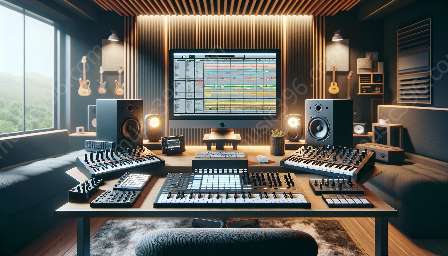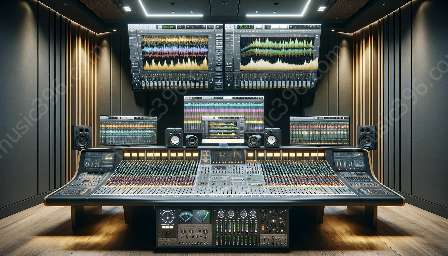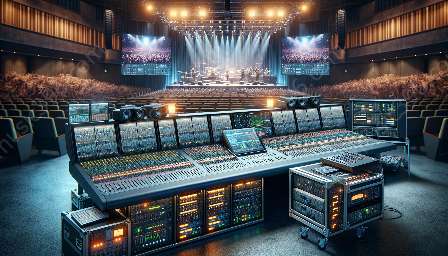Software plugins have become an integral part of music production and audio engineering. These innovative tools allow composers, producers, and sound designers to enhance their creative process, providing a vast array of virtual instruments, effects, and processing capabilities.
The Importance of Software Plugins in Music Production
Software plugins have revolutionized music creation by offering a wide range of possibilities and creative freedom. Whether it's virtual synthesizers, EQs, compressors, reverbs, or unique sound design tools, plugins have significantly expanded the sonic palette available to artists. In addition to their creative potential, plugins have also contributed to streamlining the production process, allowing for efficient workflow and quick access to high-quality sounds and effects.
Choosing the Right Plugins
When it comes to selecting software plugins for music and audio production, it's crucial to consider the specific needs of your project. Start by identifying the musical genres, styles, and sonic textures you aim to achieve. Explore a variety of plugin options, considering factors such as sound quality, user interface, and compatibility with your digital audio workstation (DAW).
It's advisable to build a collection of plugins that covers a broad spectrum of sonic capabilities, catering to different musical requirements. This might include virtual instruments for melodic and rhythmic elements, as well as a selection of audio effects for shaping and processing sounds. Additionally, having specialized tools for mixing, mastering, and sound design can further enhance the overall production process.
Optimizing Workflow with Software Plugins
Efficient utilization of software plugins involves optimizing your workflow to ensure seamless integration and maximum creative flexibility. Organizing your plugins into categorized folders or customizing your workspace within your DAW can help streamline your production process and increase efficiency. Creating templates with pre-configured plugin chains for different instruments or mixing scenarios can also save time and provide consistency across projects.
Understanding Signal Flow and Processing Techniques
It's essential to comprehend the signal flow and processing techniques when using software plugins. Gain a thorough understanding of concepts such as signal routing, parallel processing, and side-chain compression to harness the full potential of your plugins. Experiment with various processing chains and signal routings to develop a deep understanding of how different plugins interact and affect the overall sonic output.
Keeping Your Plugin Collection Organized
As your collection of plugins grows, maintaining an organized system becomes crucial. Utilize naming conventions, labeling, and folder structures to categorize and group your plugins effectively. This allows for quick and easy access to the right tools when needed, preventing clutter and confusion within your workspace.
Staying Updated and Exploring New Tools
With the constantly evolving landscape of software development, staying updated with the latest plugins and audio technologies is essential. Keep an eye on industry trends, new releases, and updates from plugin developers to stay ahead of the curve. Exploring new tools and techniques can inspire fresh ideas and elevate your music production to new heights.
Effective Use of Virtual Instruments and Synthesizers
Virtual instruments and synthesizers are powerful assets in music creation, offering a wide range of emulated analog and digital sounds. To optimize their use, consider delving into sound design principles and synthesis techniques. Understanding parameters such as oscillators, filters, and modulators can empower you to craft unique and expressive sounds.
Harnessing the Potential of Audio Effects
Audio effects play a pivotal role in shaping the sonic characteristics of a composition. Whether it's EQ, compression, modulation, or spatial effects, understanding the nuances of each effect type and its parameters can significantly impact the production quality. Experiment with different effect combinations and settings to explore new sonic textures and add depth to your music.
Collaboration and Sharing with Plugins
Collaborating with other musicians and producers becomes seamless with the use of software plugins. With the widespread availability of plugin formats such as VST, AU, and AAX, sharing project files and collaborating across different platforms and DAWs is easier than ever. This fosters a collaborative environment, allowing artists to seamlessly exchange ideas, projects, and sounds with one another.
Ensuring Plugin Compatibility and Stability
When integrating software plugins into your music production workflow, it's essential to ensure compatibility and stability. Regularly update your plugins and your DAW to the latest versions to avoid potential conflicts and instability. Additionally, consider system requirements and optimization to prevent performance bottlenecks that may hinder your creative process.
Utilizing Software Plugins Ethically and Responsibly
As technology continues to evolve, ethical considerations surrounding the use of software plugins are gaining prominence. Respect intellectual property rights by utilizing plugins in accordance with licensing agreements and copyright laws. Support plugin developers by acquiring legitimate licenses and advocating for fair compensation for their creative work.
Empowering Creativity with Software Plugins
Software plugins have redefined the boundaries of creativity in music production, offering a wealth of possibilities to artists at every stage of the production process. Whether it's crafting intricate soundscapes, sculpting powerful mix elements, or exploring unconventional sonic territories, plugins serve as essential tools for unleashing creative expression.
By embracing the best practices for utilizing software plugins in music creation and audio production, artists can harness the full potential of these innovative tools, elevating their sonic artistry and delivering captivating musical experiences to their audiences.




























